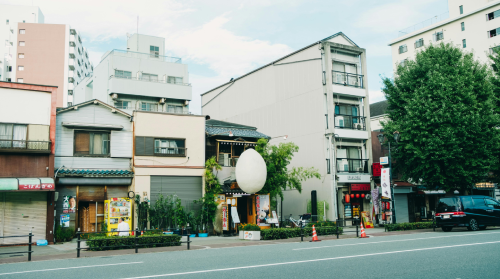Bem-vindo ao TsukiGakkou, seu blog e ferramenta para aprender japonês.
Comparison Structure: より~ほうが
When learning Japanese, one of the essential structures to express comparisons is より~ほうが. This pattern is used to indicate that something is “more” than another thing. It’s a straightforward and versatile way to make comparisons between two items, concepts, or actions. Let’s delve into this structure and understand how to use it effectively. Structure and […]
Leia mais [...]Make Requests or Ask Someone To Do Something: てください
The てください (te kudasai) form in Japanese is a polite way to make requests or ask someone to do something. It is an essential structure for beginners, as it helps communicate requests clearly and respectfully. Let’s explore how to use this form, along with some practical examples. Formation of てください To form てください, you first […]
Leia mais [...]Listing Actions: たり and か
In Japanese, there are various ways to connect phrases and express multiple actions or choices. Two common expressions for this are たり~たり and か~か. These structures are useful for beginners, especially those studying for the JLPT N5, as they provide a basic understanding of listing actions and choices. Let’s dive into these two grammar points. […]
Leia mais [...]Desire to do Something: たい
The たい form in Japanese is used to express the desire to do something. It’s an essential grammar point for beginners, especially those studying for the JLPT N5. This form is derived from verbs and is straightforward to use once you understand the basics. Formation of たい Form To form the たい form, take the […]
Leia mais [...]“There Is” or “There Are”: があります and がいます
In Japanese, there are two commonly used verbs to express existence: あります (arimasu) and います (imasu). Both verbs mean “there is” or “there are,” but they are used in different contexts. The key difference lies in what they describe: あります is used for inanimate objects and abstract things, while います is used for animate objects, […]
Leia mais [...]Contrasts and Contradictions: しかし, でも, けど, and けれども
When learning Japanese, it’s essential to understand how to express contrasts and contradictions. Four common words used for this purpose are しかし, でも, けど, and けれども. Each of these has a slightly different nuance and usage. Let’s explore them in detail: しかし わたし は がくせい です。 しかし、アルバイト も しています。 – I am a student. However, I also have a part-time […]
Leia mais [...]Forming Questions: どんな and どうやって
In Japanese, two useful expressions you’ll frequently encounter are どんな (donna) and どうやって (douyatte). Both are integral to forming questions and understanding the context of conversations. Let’s dive into their meanings and uses. どんな (Donna) The word どんな is a question word that means “what kind of” or “what type of.” It’s used to ask […]
Leia mais [...]Probability and Questions: だろう, でしょう, どうして, and なに
When learning Japanese, it’s essential to grasp the basic grammar points to build a strong foundation. This post will cover four key concepts: だろう, でしょう, どうして, and なに. We’ll keep things simple and easy to understand, focusing on the JLPT N5 level. だろう and でしょう Both だろう and でしょう are used to express probability or […]
Leia mais [...]Existence of Something or Someone: あります and います
In Japanese, expressing the existence of something or someone is essential for basic communication. The particles あります (arimasu) and います (imasu) are used for this purpose but apply to different situations. Differences Between あります and います Particle Usage Example Sentence Translation あります Inanimate objects いす が あります。 There is a chair. います Animate beings (people and animals) […]
Leia mais [...]Informal Contractions Indicating Prohibition: ちゃいけない and じゃいけない
In Japanese, the phrases ちゃいけない (cha ikenai) and じゃいけない (ja ikenai) are informal contractions of more formal expressions used to indicate prohibition or that something is not allowed. These are essential for expressing rules, restrictions, or advice in daily conversation. Let’s explore their meanings, usage, and differences with some examples. Basic Structure Both ちゃいけない and […]
Leia mais [...]








